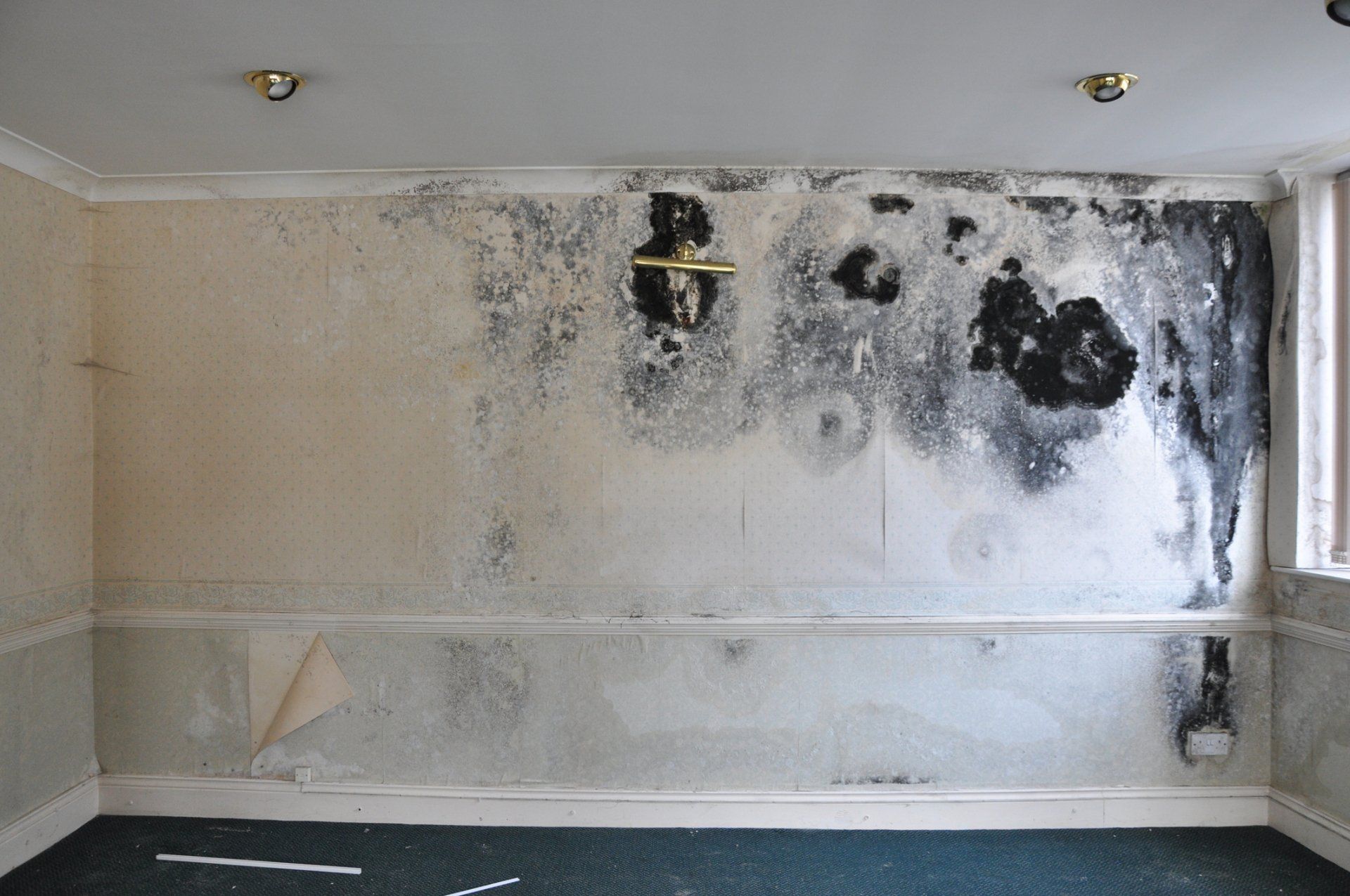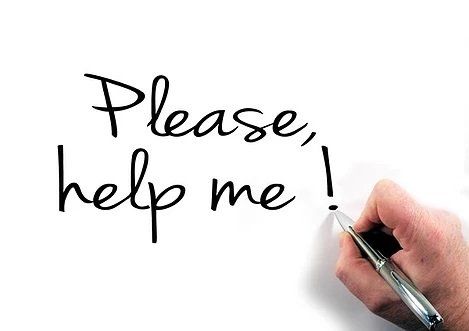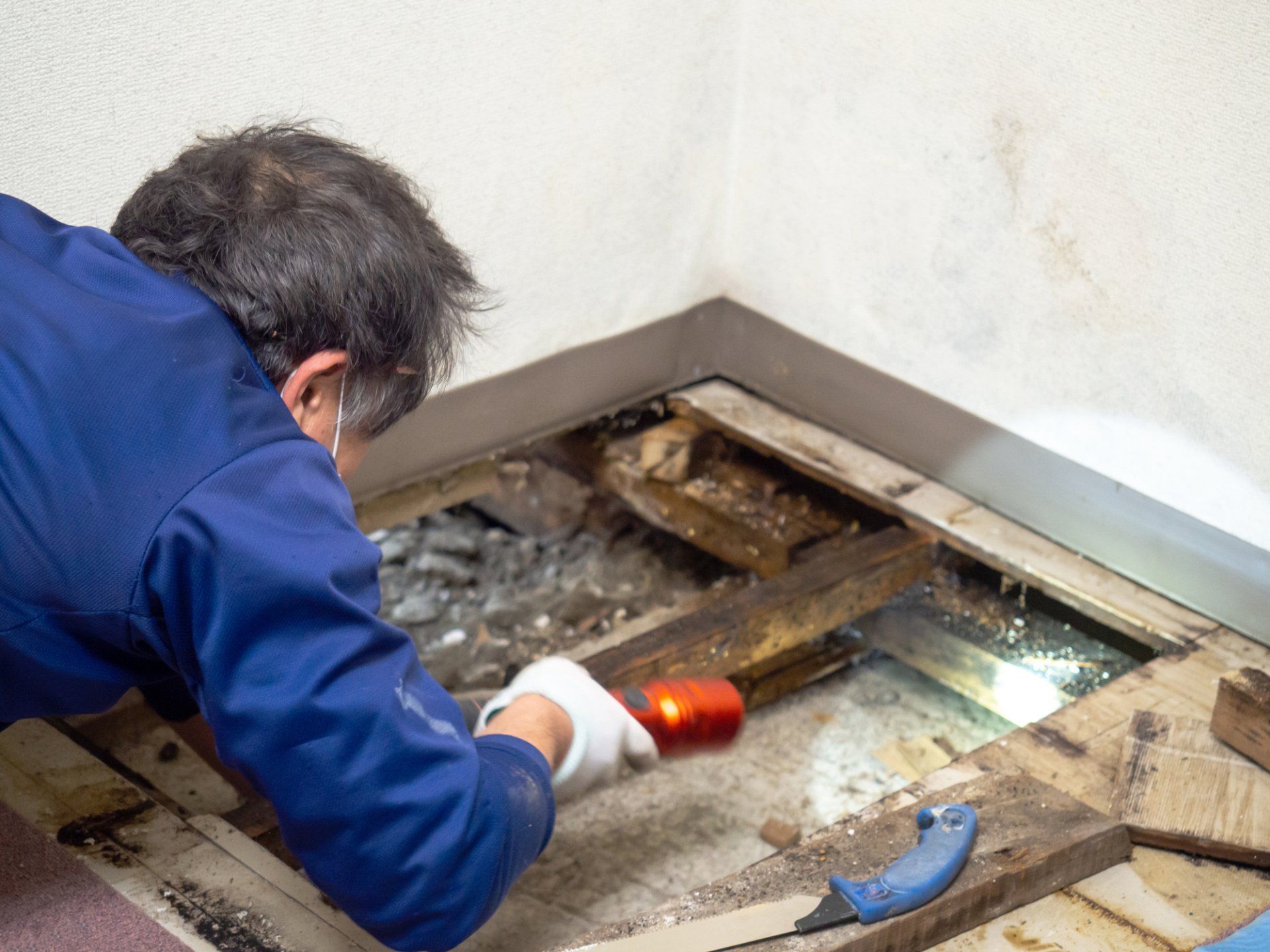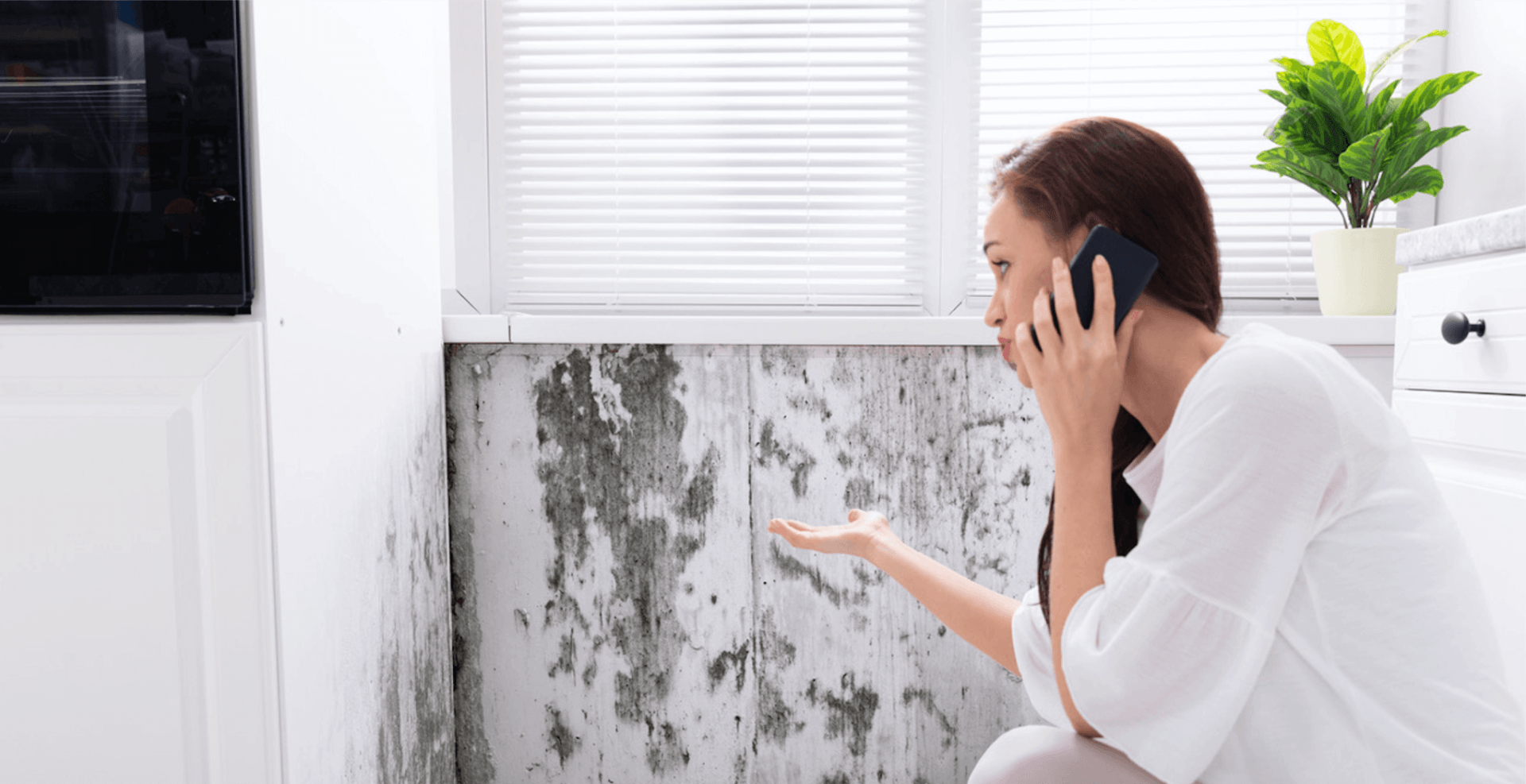CALL US NOW! 833-4-MOISTURE
Mold remediation protocols
Certification #PMRP0000033911 | PA HIC #PA161264
The Cold Hard Truth About the Effects of Black Mold
The ecosystem of molds exists all around us – from the air we breathe to the surfaces we touch, the food we eat, etc. In most instances, molds are innocuous or even beneficial to health.
However, dangerous strains also lurk around us, exploiting growth opportunities and reproducing at the expense of our health or the pristine condition of our belongings.
They can invade growth-conducive spots around your home, where they pose the danger of causing health problems when inhaled, ingested, or absorbed through skin pores.
Stachybotrys chartarum (S. chartarum), or Stachybotrys atra, commonly referred to as “black mold” is associated with myriads of health problems ranging from mild to serious and even terminal. The presence of black mold is a constant threat in the home – even the slightest exposure can cause serious health issues for people with allergies or frail health.
However, you can protect yourself and your loved ones from these problems by learning about black mold growth and black mold exposure. In this guide, we’ll equip you with all you need to know to keep mold spores at bay around your surroundings.
How Do You Know if Mold is Making You Sick?
Our biosphere is immersed in an ocean of microbes – invisible microorganisms that float around the air and latch onto surfaces, including mold. Studies show that most types of mold are harmless or even beneficial – like those that give us cheese, vinegar, etc.
However, some harmful variants commonly known as “black mold” can cause various health issues. These molds colonize dark, warm, moist spots around the house.
If the colony grows to a critical mass, the air around those areas can be heavily saturated with mold spores, with a heightened risk of getting inhaled.
People with allergies or frail health are more susceptible to severe reactions, including those with pre-existing respiratory problems, chronic problems, weakened immune systems, and aging-related health ails.
A 2012 study shows that the risks of developing asthma increase in infants and young children with mold exposure. Research also shows that damp indoor spaces – typical breeding grounds for harmful molds – can cause or worsen respiratory problems like asthma.
People with compromised immune systems like those with HIV, transplant patients, and chemo patients also stand a greater risk of developing fungal infections with mold exposure.
Even healthy people still stand the risk of serious health problems such as mycotoxicosis if they’re severely exposed to mold, like if they eat moldy food or come in prolonged contact with an infected surface.
The list of health problems goes on.
In general, you can suspect exposure to mold as the main culprit if you or any of your loved ones experience symptoms like:
- Allergy symptoms
- Allergic reaction
- Headaches
- Runny or blocked nose
- Watery, red eyes
- Coughing (especially dry coughing)
- Asthma attacks
- Skin rashes
- Sore throat
- Sinusitis
- Wheezing
Can Black Mold Kill You?
Black mold, known in the scientific world as Stachybotrys charatrum, is a toxic strain fungus with a characteristic dark color. It is often found in warm, humid, or damp spaces.
It usually sprawls over moist surfaces of materials with organic compounds that it feeds on, from carpets to subfloor boarding, drywalls, etc. In many cases, these surfaces become damp and conducive to mold growth due to leakages around the home.
Black mold is notorious for damaging furniture, fittings, and structures around the home. It can also leave a trail of destruction when it gets inside our bodies.
Although there are no reports that suggest that this mold can be lethal to healthy people, many do point to increased risks of contracting a wide range of illnesses.
Black mold might not kill you, but it can make you sick. Its presence is, therefore, a constant threat in your home.
It’s especially dangerous to people with frail health, including:
- Very young children
- Very old people
- People with preexisting lung conditions
- People with allergies
The presence of black mold can make life quite miserable for people in these groups. They may have quite frequent episodes of symptoms like stuffy head, headaches, itchy eyes, skin irritation, etc. In severe cases, exposure to black mold can trigger pneumonia in people with respiratory problems, which can be quite deadly.
It’s impossible to totally rid your home of all mold spores, but there are effective ways to repress mold growth to innocuous levels. These steps usually require tracing out and eliminating not only the mold colonies but also the water damage or source of moisture that’s creating the moist environment the mold thrives in.
Failure to tackle mold growth effectively over time can lead to long-term exposure, which is likely to cause more serious health problems.
What are the Long-Term Effects of Black Mold Exposure?
The sheer presence of mold spores in a space usually doesn’t pollute the air because they aren’t easily airborne. But some substances that molds emit are. Mold spores emit special toxins called mycotoxins in self-defense against environmental threats.
Mycotoxins are released into the air when a mold colony is disturbed. These minute particles, which are as small as 0.03 microns, can easily latch on to particles floating in the air. As such, mycotoxins are more likely to be inhaled in an infested space, posing an even greater risk than mold spores themselves.
Stachybotrys produces a special type of mycotoxins called trichothecenes, which have been shown in studies to be detrimental to humans, animals, and plants. In fact, there have been many attempts to use trichothecenes in creating lethal biological weapons.
When inhaled into the respiratory system, trichothecenes and other mycotoxins can give rise to allergic reactions like stuffed nose, itchy eyes, etc. If they continue to accumulate in the body, they can break out into the bloodstream, causing more severe health problems.
A 2004 study shows that living in damp indoor spaces significantly increases the risk of contracting upper respiratory tract symptoms as well as excessive asthma symptoms. People with weak immune systems are more likely to develop hypersensitivity pneumonitis.
Other serious long-term health effects include:
- Sick building syndrome (SBS)
- Trouble breathing that can lead to respiratory infections or fungal infections
- Lung disease
- Depression
- Anxiety
- Muscular pain
- Circulation issues, etc.
- Memory loss
- Problems with steady focus
- Weight gain
- Light sensitivity
- Persistent fatigue
- Hair loss
How Do You Treat Exposure to Black Mold?
If you or any member of your family have experienced symptoms of black mold exposure lately, you can take measures on your own to prevent it from reoccurring.
Note, however, that at best, you’ll only be able to clean up visible black mold – you might end up leaving some stones unturned.
Some common places to check for mold in homes include:
- Around nooks on shower caps
- Around sinks
- Around refrigerators
- Basements
- Inside air-conditioning units
If the mold colony is small, you can easily get rid of it by wiping the surface with a mold-removing spray. But you need to be very careful and thorough-going, using proper tools and gears. Or you could make things worse with a sloppy job.
The mold spores may stick on the clothes or material you use to wipe it, and you may unknowingly spread the colony even further when the infested material comes in contact with unaffected surfaces.
After cleaning out existing mold colonies, you can prevent new ones from spring up by:
- Fixing water leakages
- Properly ventilating bathrooms, kitchen, and laundry
- Using dehumidifiers to control humidity
- Inspecting your home regularly for signs of water damage or mold
- Treating paints used in your walls and ceilings with mold inhibitors
- Disposing flood-damaged carpets
If the mold colony is extensive, you might want to hire a professional to remove it. If you’re renting, you can tell your landlord about it so they can arrange for the mold removal.
When Should you Call in the Professionals?
You need to call in a professional when the mold colonies have grown extensively around a spot or if you find them popping up rapidly in several pockets of space around the home.
In some cases, you may have to call in a professional even when the mold colony isn’t quite extensive. In fact, you might need to call them in to rid your home of invisible mold.
Professional mold removal services usually comprise mold testing, mold inspection, mold removal, and mold remediation.
Mold Testing: This usually involves measures used to identify the presence of molds and the type of molds present in a colony. During these tests, the professionals will check for the level of saturation of mold spores on surfaces and in the air around every square foot of the home. They’ll then collect the samples and analyze their DNA to identify their strains.
The test results need to be as accurate as possible to enable effective removal remediation.
Some services use special testing tools that enable greater accuracy, including:
- Thermal imaging assessments – the use of infrared or thermal tools to identify the presence of moisture and mold buildup in hard-to-see places, including behind walls rooflines, and foundations.
- Saturation testing – The most accurate testing method to date for checking the presence of airborne mold spores
- Drone inspections – the use of drones to collect photos, videos, and air samples around hard-to-reach places such as rooflines.
Mold Removal: Mold removal services do not attempt to rid your home of molds completely – something that’s virtually impossible because we’re immersed in a sea of molds all around us. Rather, they’ll focus on removing dangerous colonies that pose health risks to the occupants.
Mold remediation: They can also focus on restoring natural order in the ecosystem of molds in the surrounding, reverting the presence of mold spores around the home to normal, natural levels.
Prevent Mold Growth Today
Now you know how to protect yourself and your loved ones from the toxic effects of black mold. By keeping black mold at bay, you can prevent both short-term and long-term exposure, which has been linked to a long list of illnesses.
At Moisture Master Pros LLC, we take a tailored approach to mold control, ensuring that each home maintains a balanced ecosystem of molds.
We’ll test for the presence of molds using special techniques like thermal imaging assessment and saturation testing to ensure the accuracy of our tests. After the tests, we can implement a customized mold removal or mold remediation plan for your home.
Call us today!



Phone: 833-4-MOISTURE | Email: info@moisturemasterpros.com
Address:
150 Monument Road Suite 207 (Office 209) Bala Cynwyd, PA 19004
Business Hours
- Mon - Fri
- -
- Sat - Sun
- Appointment Only
Payment Options






Mold remediation protocols
Certification #PMRP0000033911
PA HIC #PA161264

